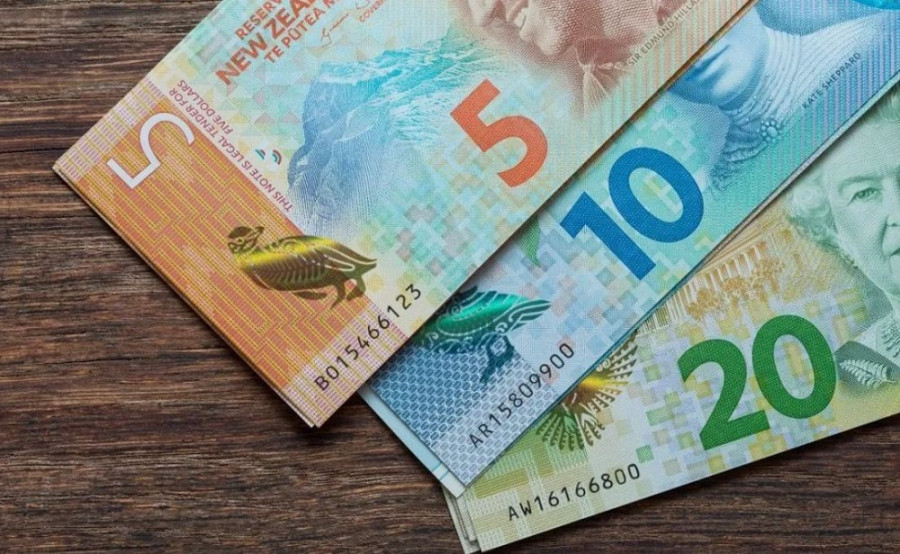The NZD/USD currency pair continues to dive, setting new price lows. The "Kiwi" is still under the influence of the Reserve Bank of New Zealand's May meeting, where they unexpectedly announced a pause in rate hikes. Amid strong positions of the greenback, the NZD/USD pair is under additional pressure, allowing the bears to develop a significant downward trend. In just 10 days, the pair has declined by 300 points, reaching around the 59-figure mark. This is a multi-month low; the last time the "Kiwi" was in this price range was in early November 2022. And it seems that the downward momentum will continue, primarily due to the decoupling of the Federal Reserve and the Reserve Bank of New Zealand's exchange rates.
Federal Reserve and RBNZ: Paths Diverged
Recall that, at the May meeting, the Reserve Bank of New Zealand implemented the basic, widely expected scenario by raising the interest rate by 25 basis points. This scenario was priced in, so the main focus of NZD/USD traders was on the subsequent statements from the RBNZ. The comments from the central bank officials disappointed buyers of the pair. The central bank made it clear that the May rate hike was the last move in the current cycle of tightening monetary policy parameters.
According to Reserve Bank Governor Adrian Orr, inflation in the country has already peaked, and a downward trend will be observed from now on. He also stated that some RBNZ members proposed declaring a pause at the May meeting, and the decision to raise rates by 25 basis points was "difficult" for the central bank. This remark is also confirmed by the minutes of the May meeting. According to the document, the members of the regulator considered the possibility of keeping the rate at 5.25%.
In other words, the RBNZ hit the brakes quite abruptly after months of tightening monetary policy.
At the same time, some Federal Reserve officials have recently adopted a noticeably more hawkish tone, hinting at readiness to support further interest rate hikes. Just yesterday, Cleveland Fed President Loretta Mester made hawkish comments, stating that there are currently no compelling reasons to pause rate hikes. In this context, she pointed to the published May Personal Consumption Expenditures (PCE) Price Index, which, in her opinion, reflects slow progress in slowing down inflation.
Indeed, the core PCE index has entered the "green zone." From September to December of last year, this crucial inflation indicator consistently declined from 5.2% to 4.6%. Then, in January and February, it stood at 4.7%, returning to the December level of 4.6% in March. And in April, the index reached 4.7% again, with a forecast decline to 4.5%.
However, not all members of the Federal Reserve are advocating for further tightening of monetary policy. In particular, Philadelphia Fed President Patrick Harker and Federal Reserve Board Governor Philip Jefferson stated yesterday that they are against a rate hike at the next meeting.
All attention on Nonfarm Payrolls
Among experts, there is no consensus regarding the future actions of the American regulator. According to the CME FedWatch Tool, the probability of a 25-basis-point rate hike at the June meeting is currently 35%, although immediately after the release of the PCE index growth data, this probability was 60%. As we can see, market sentiment is quite volatile, so the May Nonfarm Payrolls (which will be released tomorrow, June 2nd) can either strengthen or weaken the positions of the greenback.
According to preliminary forecasts, the unemployment rate in May is expected to slightly increase to 3.5%. The number of nonfarm payrolls is forecasted to grow by 170,000. The inflationary component of the Nonfarm Payrolls (the average hourly earnings indicator) is expected to demonstrate a downward trend. Thus, on a monthly basis, the indicator should reach 0.3% (April value was 0.5%), and on an annual basis, it should be at 4.2% (April value was 4.4%).
Conclusions
The current fundamental background for the NZD/USD pair contributes to further development of the downward trend, so corrective pullbacks can be used as an opportunity to open short positions.
From a technical point of view, the pair demonstrates a downward trend, confirmed by the Ichimoku indicator, which has formed its bearish "Parade of Lines" signal on the daily chart. Additionally, the price is positioned between the middle and lower lines of the Bollinger Bands indicator, which is in an expanded channel. The lower line of the Bollinger Bands on the D1 timeframe, corresponding to the price of 0.5950, serves as the support level (the nearest target of the downward trend). It would be advisable to take profits in this price area and adopt a wait-and-see position.









